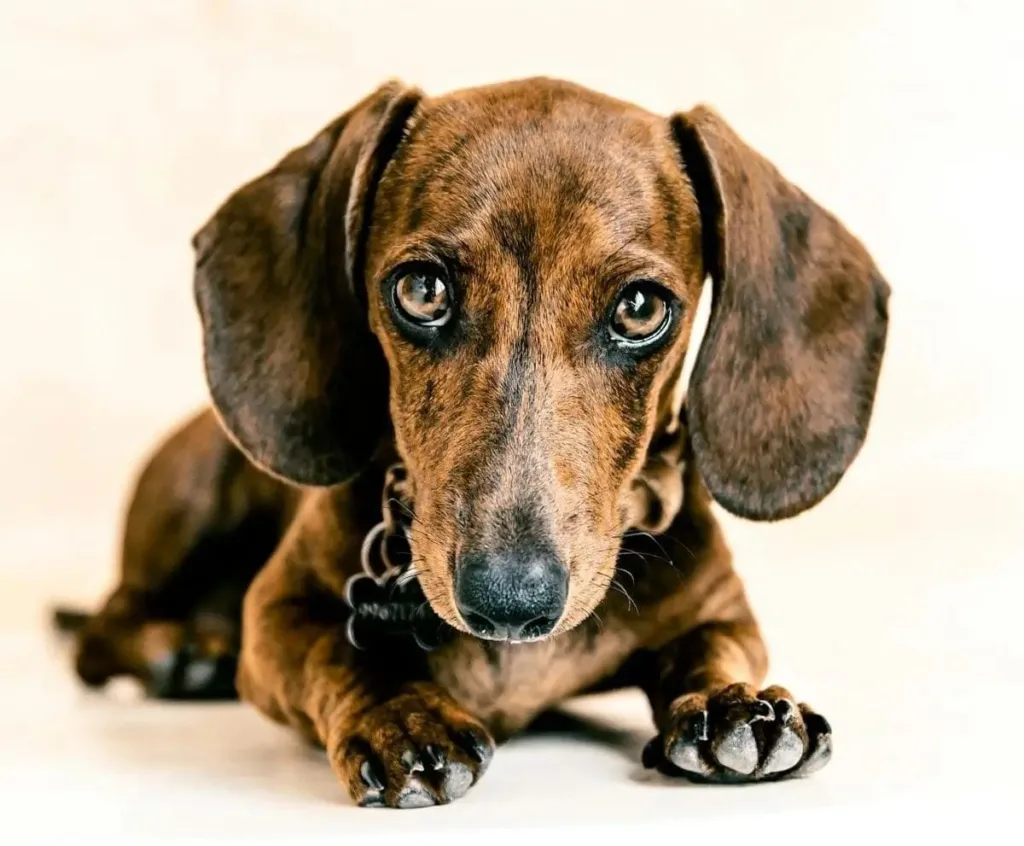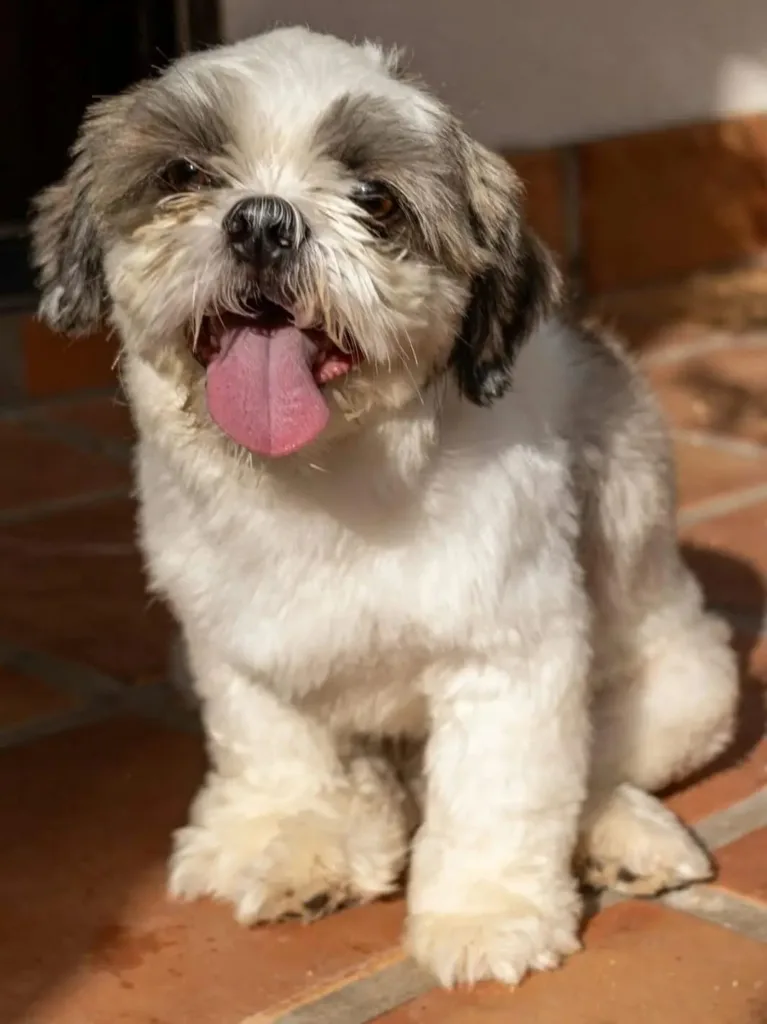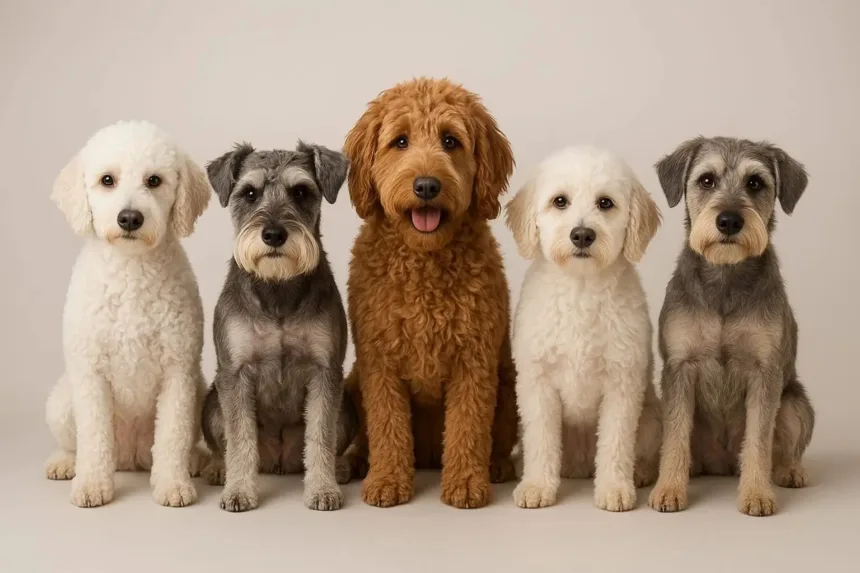For dog lovers who struggle with allergies, the idea of a “hypoallergenic” dog—a breed said to shed less or trigger fewer reactions—can be appealing. Yet the term is more marketing than science. This guide breaks down what really causes dog allergies, dispels common myths, and highlights popular low-shedding breeds like Maltese and Shih Tzu while clarifying concerns about Dachshunds (often called Weiner dogs). You’ll also find practical advice on grooming, health considerations, ethical breeding, and allergy-management strategies to help you choose a companion that fits both your lifestyle and your sensitivities.
Understanding Dog Allergies: The Science Behind the Symptoms
Dog allergies are triggered by proteins, primarily Canis familiaris 1 (Can f 1), found in a dog’s saliva, dander (dead skin), and urine. These allergens become airborne or settle on surfaces, causing sneezing, itchy eyes, rashes, or asthma. Factors such as a dog’s sex (males produce more allergens), size, diet, and home environment (e.g., humidity, ventilation) also influence allergen levels.
Allergies vary widely from person to person, and several different dog allergens can trigger reactions. Because of this variability, breed-specific claims are often unreliable, and regular weekly bathing is one of the most effective ways to reduce surface allergens—making overall management more important than breed choice.
Debunking Myths: Are Hypoallergenic Dogs Truly Non-Allergenic?
The “hypoallergenic dog” label suggests reduced allergenicity, not elimination. The American Academy of Allergy, Asthma & Immunology (AAAAI) clarifies that no breed is 100% non-allergenic.
Common Misconceptions
- Myth 1: No fur, no allergies. Hairless breeds like the Chinese Crested still produce dander and saliva-based allergens.
- Myth 2: All low-shedding dogs are hypoallergenic. Weiner dogs (Dachshunds), for example, shed moderately and are not hypoallergenic, despite some claims.
- Myth 3: Designer dogs are allergy-free. Mixed breeds like Labradoodles or Goldendoodles have unpredictable allergen levels due to genetic variability.
Breed-Specific Insights
Are Weiner Dogs Hypoallergenic?

Are Weiner dogs hypoallergenic? No, Weiner dogs, or Dachshunds, are not considered hypoallergenic. Available in smooth, wirehaired, and longhaired varieties, Dachshunds shed moderately, especially the smooth and longhaired types, dispersing dander and allergens. Their small size (5-32 lbs) may reduce allergen output compared to larger breeds, but they don’t meet the low-shedding criteria of hypoallergenic breeds like Maltese or Shih Tzu. For allergy sufferers, frequent bathing and home cleaning can help, but Dachshunds are not ideal for severe cases. This addresses queries about Weiner dog allergies and Dachshund hypoallergenic status.
Are Maltese Dogs Hypoallergenic?

Are Maltese dogs hypoallergenic? Yes, Maltese are widely regarded as hypoallergenic due to their low-shedding, silky coats that produce minimal dander when properly groomed. Weighing 4-7 lbs, these gentle lap dogs are ideal for small spaces and allergy sufferers, provided their coat is kept short and bathed weekly. However, their dander and saliva still contain allergens, so they’re not entirely non-allergenic. Health risks include heart issues and tear staining, requiring regular vet care. This clarifies Maltese hypoallergenic and small allergy-friendly dogs concerns.
Are Shih Tzu Dogs Hypoallergenic?

Are Shih Tzu dogs hypoallergenic? Yes, Shih Tzu are considered hypoallergenic thanks to their low-shedding coat, which can be kept long or clipped short to trap dander. Weighing 9-16 lbs, these affectionate dogs suit allergy-prone owners, but their coat requires daily brushing or regular grooming to prevent matting and allergen buildup. Health concerns include brachycephalic issues and eye infections, demanding attentive care. This addresses Shih Tzu hypoallergenic and allergy-friendly lap dogs queries.
Comprehensive List of Hypoallergenic Dog Breeds
Below is a detailed list of breeds commonly labeled as hypoallergenic due to low-shedding coats or minimal dander dispersal, including Maltese and Shih Tzu, with Weiner dogs excluded for clarity. Each entry covers temperament, health risks, grooming needs, and costs, addressing gaps in incomplete breed lists.
1. Poodle (Toy, Miniature, Standard)
- Traits: Intelligent, curly non-shedding coat. Sizes: 4–70 lbs.
- Health Risks: Hip dysplasia, Addison’s disease, bloat (Standards).
- Lifespan: 12–15 years.
- Grooming: Professional grooming ($50–100 every 4–6 weeks).
- Allergy Note: Regular bathing reduces dander; ideal for allergy-friendly dogs.
- Cost: $1,000–3,000.
2. Bichon Frise
- Traits: Playful, fluffy white low-shedding coat. Weight: 12–18 lbs.
- Health Risks: Patellar luxation, dental issues.
- Lifespan: 14–15 years.
- Grooming: Daily brushing; grooming costs $40–80 monthly.
- Allergy Note: Small size minimizes dander with frequent baths, great for Bichon Frise allergies.
- Cost: $1,000–2,500.
3. Maltese
- Traits: Gentle, silky low-shedding coat. Weight: 4–7 lbs.
- Health Risks: Heart issues, tear staining, separation anxiety.
- Lifespan: 12–15 years.
- Grooming: Daily brushing; short clips reduce dander.
- Allergy Note: Are Maltese dogs hypoallergenic? Yes, with proper care, ideal for small allergy-friendly dogs.
- Cost: $1,000–3,000.
4. Shih Tzu
- Traits: Affectionate, long or short low-shedding coat. Weight: 9–16 lbs.
- Health Risks: Brachycephalic issues, eye infections.
- Lifespan: 10–18 years.
- Grooming: Daily brushing or short clips; grooming costs $40–70.
- Allergy Note: Are Shih Tzu dogs hypoallergenic? Yes, with regular grooming, suited for allergy-friendly lap dogs.
- Cost: $1,000–2,500.
5. Schnauzer (Miniature, Standard, Giant)
- Traits: Alert, wiry low-shedding coat. Sizes: 11–90 lbs.
- Health Risks: Pancreatitis, cataracts.
- Lifespan: 12–15 years.
- Grooming: Regular clipping ($50–100 every 6 weeks).
- Allergy Note: Wiry coat traps dander, good for low-allergen guard dogs.
- Cost: $1,500–3,500.
6. Portuguese Water Dog
- Traits: Energetic, wavy non-shedding coat. Weight: 35–60 lbs.
- Health Risks: Hip dysplasia, progressive retinal atrophy.
- Lifespan: 10–14 years.
- Grooming: High-maintenance clipping and bathing.
- Allergy Note: Needs 1–2 hours daily exercise, suits active hypoallergenic breeds.
- Cost: $2,000–4,000.
7. Yorkshire Terrier
- Traits: Feisty, silky-haired. Weight: 4–7 lbs.
- Health Risks: Tracheal collapse, dental disease.
- Lifespan: 11–15 years.
- Grooming: Daily brushing; short cuts reduce dander.
- Allergy Note: Low dander, but fragile, ideal for small low-shedding dogs.
- Cost: $1,200–3,000.
8. Soft Coated Wheaten Terrier
- Traits: Friendly, silky low-shedding coat. Weight: 30–40 lbs.
- Health Risks: Protein-losing nephropathy, skin allergies.
- Lifespan: 12–14 years.
- Grooming: Regular brushing and trimming ($50–80 monthly).
- Allergy Note: Soft coat traps dander, good for medium hypoallergenic dogs.
- Cost: $1,500–3,000.
9. Havanese
- Traits: Cheerful, silky non-shedding coat. Weight: 7–13 lbs.
- Health Risks: Patellar luxation, cataracts.
- Lifespan: 14–16 years.
- Grooming: Daily brushing; professional grooming recommended.
- Allergy Note: Low dander with care, suits small hypoallergenic breeds.
- Cost: $1,500–3,000.
10. Chinese Crested (Hairless or Powderpuff)
- Traits: Playful, hairless or fluffy. Weight: 8–12 lbs.
- Health Risks: Skin issues, dental problems.
- Lifespan: 13–18 years.
- Grooming: Hairless needs skin care; Powderpuff needs brushing.
- Allergy Note: Hairless still produces dander, relevant for hairless dog allergies.
- Cost: $1,200–2,500.
11. Basenji
- Traits: Cat-like, short-coated, minimal shedding. Weight: 22–24 lbs.
- Health Risks: Fanconi syndrome, eye issues.
- Lifespan: 13–14 years.
- Grooming: Low-maintenance; self-grooming reduces dander.
- Allergy Note: Short coat minimizes allergens, ideal for low-maintenance allergy dogs.
- Cost: $1,500–3,000.
12. Afghan Hound
- Traits: Elegant, long low-shedding coat. Weight: 50–60 lbs.
- Health Risks: Hip dysplasia, hypothyroidism.
- Lifespan: 12–14 years.
- Grooming: Frequent brushing and baths.
- Allergy Note: Long hair traps dander, needs care for large hypoallergenic dogs.
- Cost: $2,000–4,000.
13. Irish Water Spaniel
- Traits: Energetic, curly non-shedding coat. Weight: 45–68 lbs.
- Health Risks: Hip dysplasia, ear infections.
- Lifespan: 10–12 years.
- Grooming: Regular clipping and bathing.
- Allergy Note: Great for active owners, fits allergy-friendly sporting dogs.
- Cost: $1,800–3,500.
14. Kerry Blue Terrier
- Traits: Spirited, soft wavy low-shedding coat. Weight: 33–40 lbs.
- Health Risks: Eye issues, skin cysts.
- Lifespan: 12–15 years.
- Grooming: Regular trimming ($50–80 monthly).
- Allergy Note: Dense coat traps dander, good for medium hypoallergenic breeds.
- Cost: $1,500–3,000.
15. West Highland White Terrier (Westie)
- Traits: Cheerful, white low-shedding coat. Weight: 15–20 lbs.
- Health Risks: Skin allergies, pulmonary fibrosis.
- Lifespan: 13–15 years.
- Grooming: Regular brushing and clipping.
- Allergy Note: Double coat reduces dander dispersal, suits small allergy-friendly dogs.
- Cost: $1,200–2,500.
Care and Maintenance: Minimizing Allergens in Your Home
Owning a hypoallergenic dog like a Maltese or Shih Tzu requires proactive allergy management:
- Grooming: Weekly baths with hypoallergenic shampoos can reduce dander by up to 84%. Professional grooming costs approximately $500–1,500 annually.
- Home Environment: Use HEPA air purifiers ($100–300) and vacuums to trap allergens. Keep dogs out of bedrooms and wash bedding weekly.
- Diet: Omega-3–rich foods (e.g., salmon oil) may help reduce skin flaking.
- Training: Well-trained dogs minimize close contact, reducing allergen exposure.
Choosing the Right Hypoallergenic Dog: Practical Tips
- Test Before Committing: Spend time with the dog to assess reactions, as individual chemistry varies. Skin-prick tests or exposure trials are recommended.
- Adoption vs. Buying: Shelters often have hypoallergenic mixes (for example, Maltese or Shih Tzu crosses), which also helps avoid puppy-mill issues.
- Family Considerations: Some studies suggest early dog exposure may help prevent allergies in children, but always consult a pediatrician first.
Alternatives for Severe Allergy Sufferers
If hypoallergenic dogs like Maltese or Shih Tzu aren’t viable, consider:
- Immunotherapy: Allergy shots or sublingual drops can desensitize many patients. Initial costs are typically $1,000–2,000 per year.
- Non-Canine Pets: Fish, reptiles, or birds avoid dog allergens entirely.
- Emerging Tech: Gene-edited dogs with reduced allergen levels are under research, though ethical and accessibility concerns remain.
Conclusion: Finding Your Allergy-Friendly Furry Friend
Hypoallergenic dogs like Maltese and Shih Tzu offer hope for those with pet allergies, but no breed, including these, is truly non-allergenic. Weiner dogs (Dachshunds) are not hypoallergenic due to moderate shedding. By understanding dog allergy science, debunking myths, and choosing low-shedding breeds like Poodles, Bichons, or Schnauzers, you can minimize symptoms. Prioritize ethical breeding, rigorous grooming, and allergy management for success. Consult allergists and vets, and consider adoption to align with your values. With the right approach, your dream of a low-allergen dog can become a reality—minus the sneezes.
FAQs
What is the #1 hypoallergenic dog breed?
Poodles (all sizes) are often ranked the most hypoallergenic due to their curly, low-shedding coats.
Can you build immunity to dog allergies?
Some people report reduced reactions over time, but true immunity is rare. Allergy shots (immunotherapy) may help.
Do hypoallergenic dogs require less grooming?
No. Most need frequent brushing and professional grooming to control dander and matting.
Do air purifiers help with dog allergies?
Yes, HEPA air purifiers can significantly reduce airborne dander and allergens when used consistently.

